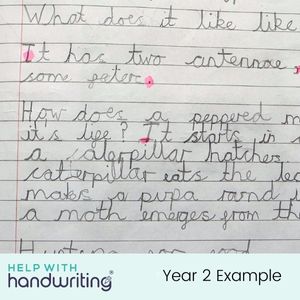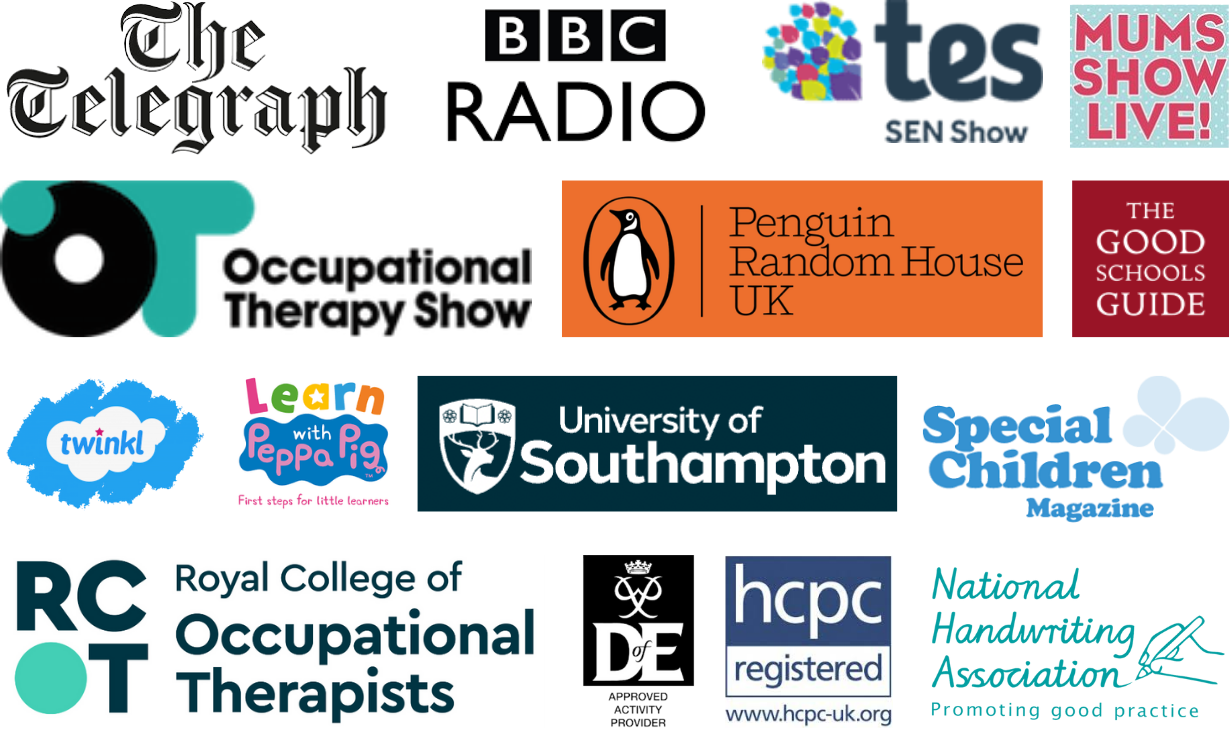Handwriting Practice 6 - 7 Years

Age 5
Can print letters in the upper and lowercase style.
Age 6
Forms letters with accuracy but struggles with reversals


Age 7
Forming letters accurately. Inconsistency with size and shape
Age 8
All formations clear with even word space gaps

What a teacher is expecting to see

Here is an example of what a teacher would be expecting to see in their class from a child in year 2. This example is from someone who is thought of as an average student.
Your child’s teacher will want your child to form all letters. They should be the correct size relative to one another. They will also teach them how to join letters. They will use diagonal and horizontal joins.
What to expect at this age in more detail
By the age of six, your child will be able to form letters of the alphabet with some accuracy. They may struggle with some letter orientation and reversals of B and D are common. Their legibility is improving. Your child should be able to express their ideas in writing. They’ll be able to understand orientation by writing from left to right. Placing writing from top to bottom of the page will still be developing. They usually have an interest in writing. Wanting to create stories and write to show their skills.
By seven, your child will be forming letters accurately. Sizing and shape inconsistencies may occur. The overall legibility can still be irregular. They’re beginning to understand how to place even word space gaps. This is because they are still developing their visual perceptual skills.
What support your child might get for handwriting at school?
At your child’s school, they usually receive only 15 minutes a day of handwriting instruction or a total of 1hr 30 minutes a week.
Sometimes handwriting rewards are common. They can be in the form of school certificates with words saying the writing is “neat” or “great”. These can be a great motivational tool. But, we think the wording on them is unhelpful. It reinforces to children that writing can only be good or bad.
Why handwriting practice matters
The real difficulty at this age is that kids notice any differences. They notice what their best friend can do. They notice what their second-best friend can do. And they notice what they can’t do. This can be very demotivating. Children need to feel confident about how they write to practice. Otherwise, they use avoidance tactics. For example, they write small amounts on the page. But, they can say amazing, detailed ideas.
They’re willing to practice writing. However, they only know of boring worksheets. The sheets ask them to repeat the same word or letter. Leaving them to think that this is the only way to improve. Luckily, we know differently.
Expand Your Handwriting Know-how: 4 Must-Read Guides for Parents
Writing made fun: 3 Ways to Boost Your Child's Skills
Engaging, Age-Appropriate Solutions Await


Playful Practice: 3 Fun Handwriting Activities for You to Try at Home
Here are 3 ideas that you can try at home. These are things we do when helping children this age to help keep handwriting practice fun.
List of Superhero Names
Ask your child to write as many superhero names as they can think of. To make this more difficult, you can try to put the list in alphabetical order.
Discover Animal Facts
Children love learning about animals. The stranger the facts, the better. Top Trump cards help children to do this. Ask your child to copy the information on the card.
Horrible Histories
Depending on your child’s age, Horrible Histories can be a great writing activity. Topics like “Rotten Rulers,” “Foul Firsts,” and “Kooky and Spooky” always grab interest. Ask your child to summarise what they have heard into a sentence.

Be the first to know: Weekly expert tips and insider insights


Join our Thursday newsletter for:
Expert handwriting tips
Behind-the-scenes insights
Latest handwriting research
New blog post alerts
Exclusive discounts on our courses
Please tick which age group is most relevant.
Thank you!
You have successfully signed up and a newsletter will be on its way to you shortly.
We promise we will respect your details and we will not spam you with rubbish content.






